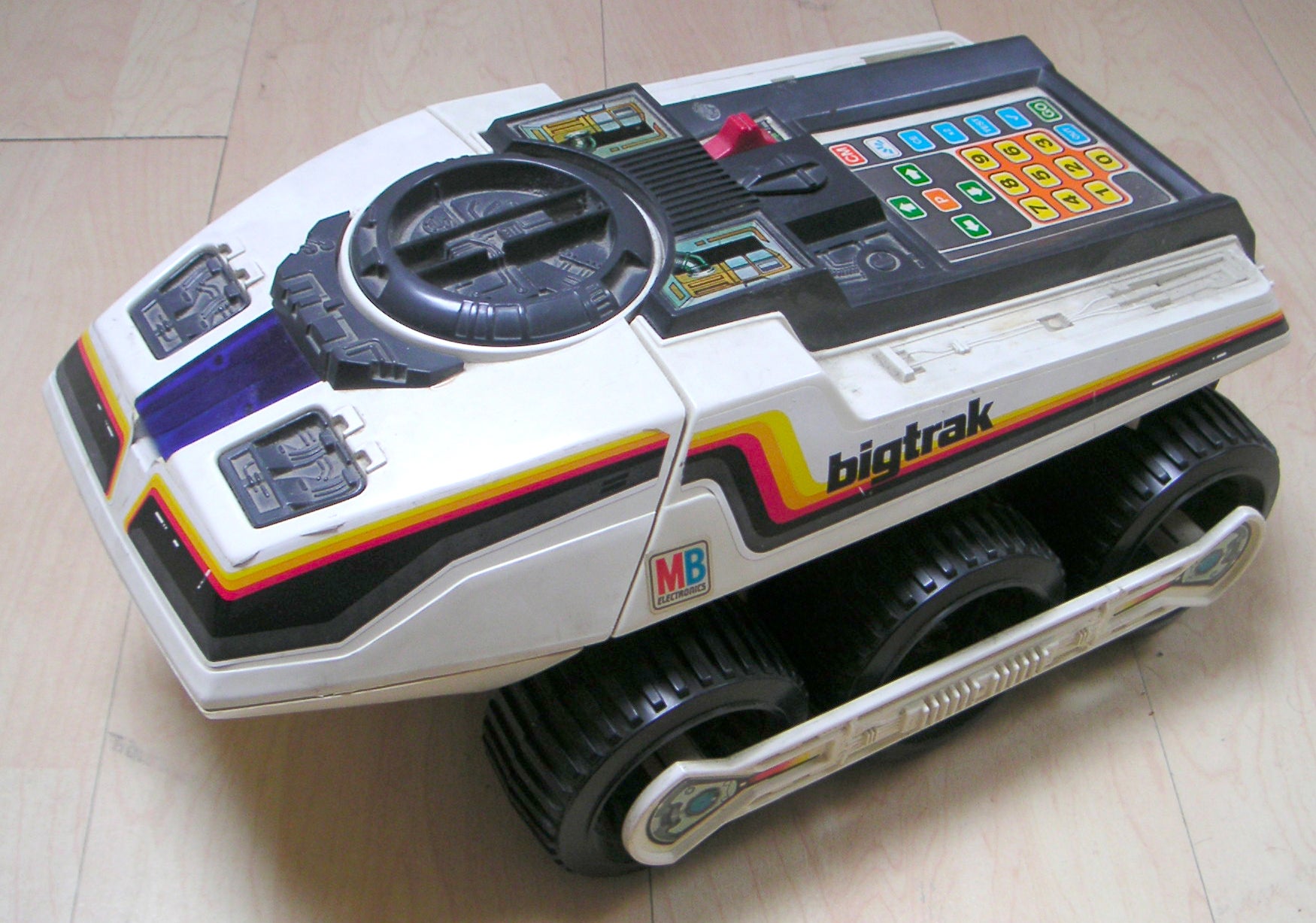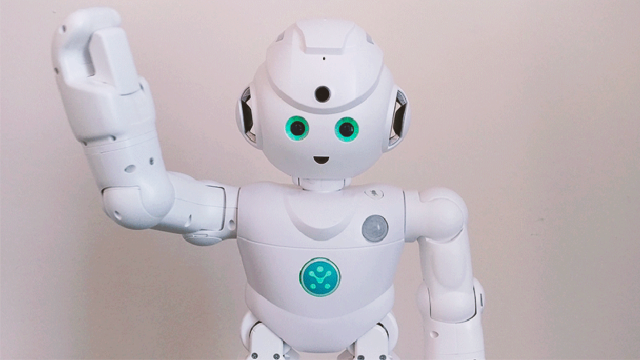The history of consumer electronics is dotted with failures, like the vastly superior Betamax tape format, or 3D TVs, but one device that’s been especially difficult to convince consumers to buy has been robots. The technology at our disposal still hasn’t caught up to what everyone expects a bot to be able to do for them, even with Elon Musk’s and Amazon’s promises.
That hasn’t stopped companies from trying to convince the average consumer that having a robot at home will improve their lives, and over the past 40+ years, we’ve seen lots and lots of robots come and go. Some were complete failures, while others were beloved enough among those that actually bought them to get thrown funerals when they stopped working. We’re rating some of the most memorable bots of the past four decades based on how useful they actually were, but it’s obvious we’ve still got a long way to go before the robots of science fiction become our reality.
Milton Bradley’s Big Trak

Rating: 7/10, Educational and fun. What defines a robot? Does it have to look like a humanoid or a recognisable animal, or does it simply have to be a machine that can execute a series of instructions? Milton Bradley’s Big Trak falls into that latter category, and while primarily marketed as a toy, it could also be considered one of the first commercially successful robots, as it featured a keypad on top that could be used to program where the six-wheeled vehicle would drive and what it would do (fire its pretend blaster, pause for a certain number of seconds, etc.). You could chain up to 16 commands together, and the toy taught the fundamental concepts of programming before the personal computer was a thing.
Radio Shack Robie Junior
Rating: 3/10, Cute but mostly useless. For a lot of ‘80s kids, Radio Shack provided their first real experience with a robot. Tandy Electronics’ Robie Junior was closer to an RC toy than an actual robot, but it was smart enough to follow its wireless remote without needing to be manually steered, thanks to a bumper on the front that could detect obstacles in its way. Its only practical function, besides chewing through a mountain of batteries, was carrying things such as drinks on a small tray, but its approach to object detection was to just crash into things, which often led to plenty of spilled beverages.
Tomy Dustbot
Rating: 5/10, Surprisingly useful on a basic level. Japan’s Tomy was known for some of the best electronic toys in the ‘80s, and long before the arrival of the Roomba, it created Dustbot, which is arguably the world’s first robovac. As it randomly rolled across a desk or floor, a small pair of arms manoeuvred a tiny broom back and forth, but hidden inside the bot was a vacuum with enough suction power to tackle dust, crumbs, and even confetti. It wasn’t smart, but if lunch often left your desk a mess, Dustbot would happily tidy up after you.
Tomy Omnibot 2000
Rating: 5/10, Slightly more helpful than a toddler. Most of the robots Tomy churned out in the ‘80s looked like toys and acted like toys, but its Omnibot 2000 felt like it was straight out of science fiction. Standing several feet tall, it featured two articulated arms with grippers on each one, plus a decorative head with a big pair of glowing eyes (the robot had no vision capabilities). It also wasn’t programmable in the traditional sense, but it still offered autonomous capabilities. Users could manually control the robot and then record those movements onto cassette tapes that could be played back later, replicating the moves. With enough patience, the robot could even be ‘taught’ to pour drinks or pick things up, but it was from being a robot servant.
Heathkit HERO 2000
Rating: 6/10, Surprisingly capable and extremely educational. If you had any interest in robotics in the ‘80s, you were undoubtedly familiar with a company called Heathkit, which sold some of the most capable robots regular consumers could buy, although they weren’t cheap. Its HERO (Heathkit Educational RObot) line included a series of DIY robot kits of increasing complexity, with the HERO 2000 debuting in 1986 with a $US3,000 ($4,165) price tag. It was one of the company’s most complex offerings in the ‘80s, with a highly-articulated arm with gripper, room-sensing sensors, and even voice synthesis. Its practical usefulness was limited aside from impressing nerdy friends, but for those interested in learning about electronics, building the DIY bot was a worthwhile challenge.
Nintendo R.O.B. (Robotic Operating Buddy)
Rating: 8/10 as a marketing tool, 0/10 as a robot. As we’ll find out tonight when Tesla reveals more details about its upcoming robot project, robots have long been a captivating marketing tool, promising the future while usually under-delivering. That was definitely the case with Nintendo’s R.O.B., a peculiar robotic accessory included with the NES to make it seem like far more than just another video game console. I can remember being fascinated by R.O.B. in TV commercials for the NES, but the few friends I knew who actually had one found it a frustrating video game companion, and most couldn’t tell me what it was used for.
Sony Aibo
Rating: 8/10, An adorable artificial companion. It’s hard to argue that Sony wasn’t the first company to create a robot that consumers truly embraced. The original Aibo ERS-110 sold out of its limited 5,000 unit run in just 20 minutes, despite having a $US2,500 ($3,471) price tag. Unlike robots that strived to take over domestic duties, the Aibo was simply designed to emulate a pet, providing interactive companionship without needing the hassle of daily walks. It was so popular that when Japanese Aibo owners were no longer able to get replacement parts to keep their robopets running, they would hold actual funerals for them.
Ugobe Pleo
Rating: 7/10, An effective demonstration of how lifelike robots can be. The success of Sony’s Aibo saw lots of other robotic companions released over the years, including Pleo in 2007, designed by the co-creator of Furby. Instead of a cat or dog, Pleo took the form of a baby Camarasaurus dinosaur (whose body afforded plenty of room for electronics) that offered lots of interactivity by leveraging a camera powered vision system, touch sensors, microphones, a gyro, infrared communications, and force-feedback sensors in the joints. Unlike the Aibo’s hard plastic shell, Pleo’s soft skin encouraged people to touch it, but despite having a much cheaper $US349 ($484) price tag, it didn’t take long for the bot to go extinct.
Anki Cozmo and Vector
Rating: 5/10, As cute as a Pixar character, but that’s about it. Anki first made a name for itself with smart RC slot cars that ran on paper tracks, but eventually released a pair of companion robots in 2016 and 2018 that were small but packed a lot of emotion and expression thanks to a pair of cleverly animated eyes courtesy of Pixar artists. Cozmo could roam all over your desk, play around with a toy cube, recognise faces, respond to commands, and with Vector, Anki wanted to create a companion bot that could also control the smart home. It mostly succeeded only at being cute, however, before disappearing from the market.
Paro
Rating: 7/10, An effective alternative to animal-assisted therapy. Designed in 1993 by Takanori Shibata in Japan, Paro is a robot inspired by harp seals that emulates their cries and encourages physical interactions through a coat of soft white fur and puppy dog eyes. It doesn’t fetch drinks or clean floors, but was instead created to assist with social therapies that help stimulate patients with cognitive disorders like dementia or Alzheimer’s. Even with limited movements, Paro comes across as incredibly lifelike and engaging, but also comes with a $US6,000 ($8,329) price tag, making it almost impossible to justify for someone just looking for a bot to snuggle up with.
Jibo
Rating: 1/10, Never really had a chance to be useful to anyone. Born from research at MIT, Jibo was designed to be a social robot not unlike the smart hubs and speakers we all use today, but with an animated circular screen for a face that could turn and pivot to look directly at people engaging with it. It was heavily hyped back in 2014 with abilities that included recognising faces, snapping properly framed photos on demand, and entertaining kids, but it faced endless delays, with just a few units ending up in the hands of those who backed its crowdfunding initiatives. It was either ahead of its time, or more complex than a smart assistant needed to be.
UBTECH Robotics Lynx
Rating: 5/10, Unsettlingly useless. Back in 2017, before every last device in our homes was connected to and controlled by smart assistants living in the cloud, Ubtech’s Lynx seemingly filled a very useful role. The 20-inch tall humanoid could walk and balance on two legs and follow you around your home, ensuring that Amazon’s Alexa was always in range and ready to answer your questions about the weather or sports. It wasn’t a bad idea, just not one worth $US800 ($1,111).
iRobot Roomba

Rating: 8/10, As useful as consumer robots get. There’s really only one task in a home that robots have succeeded in helping out with: cleaning floors. And although Electrolux was the first to release a robovac in 1996 with its Trilobite model, the affordability and effectiveness of iRobot’s Roomba, which debuted in 2002, has made that brand the household name for these devices. iRobot’s robovacs and have evolved and improved over 20 years to the point where they can now handle mopping and intelligently navigate your home, even distinguishing between various rooms. But as successful as they’ve been, they still can’t pick up dirty laundry, clean furniture, or even handle stairs.
Amazon Astro
Rating: 4/10, A concerning look at the future of consumer robots. Amazon’s Astro sounds intriguing on paper as an autonomous home sentry and “domestic assistant” that can keep tabs on your house through the use of a telescoping camera, while doubling as a roaming access point to the company’s Alexa smart assistant that can follow users from room to room. But its benefit to consumers seems to be an afterthought, as many believe Astro is first and foremost a way for Amazon to collect more info on users, including detailed floor maps of their homes and even scans of their faces — required for the bot to serve as an autonomous security guard.
It seems consumer robots will become more effective spies long before they become effective servants, and even if they eventually learn to do laundry and wash dishes, will we really want to invite them into our homes?
